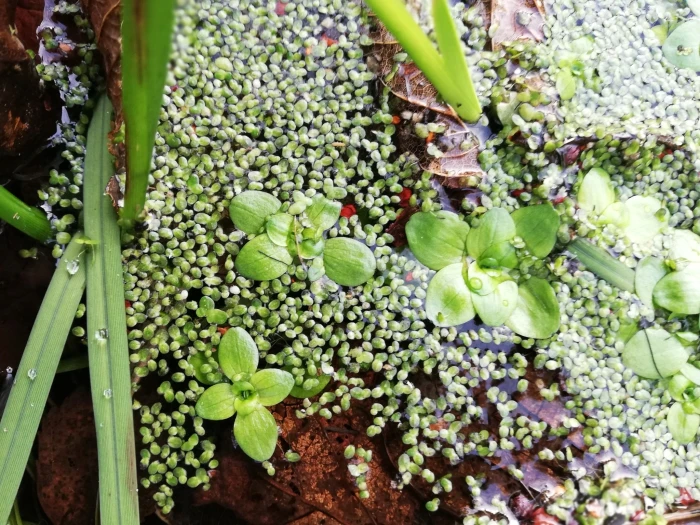Least Duckweed
(Lemna minuta)
Least Duckweed (Lemna minuta)
/
/

Татьяна Максимова
CC BY 4.0
Image By:
Татьяна Максимова
Recorded By:
Copyright:
CC BY 4.0
Copyright Notice:
Photo by: Татьяна Максимова | License Type: CC BY 4.0 | License URL: http://creativecommons.org/licenses/by/4.0/ | Rights Holder: Татьяна Максимова | Publisher: iNaturalist | Date Created: 2020-01-12T14:49:06-08:00 |
























Estimated Native Range
Climate Requirements for Moses Lake, Washington
| This Plant | Your Site | Plant Suitability for Your Location | ||
|---|---|---|---|---|
| • Precipitation | 65" - 78" | 7" | Your precipitation may be insufficient for this plant. Irrigate N" / year. | Irrigate N" / year |
| • High Temp. | 69°F - 78°F | 87°F | Your summer temperatures are normal for this plant. | Excellent |
| • Low Temp. | 31°F - 37°F | 22°F | Your winter temperatures are normal for this plant | Excellent |
This plant should grow well at your location with about N inches per year (Y minutes per month) of irrigation.
Summary
Lemna minuta, commonly known as Least Duckweed, is a free-floating aquatic perennial herb. While its exact native range within the Americas is not well-documented, it is believed to inhabit calm freshwater habitats such as ponds, marshes, and slow-moving streams. It is now naturalized in many parts of the world, including Europe, where it was first reported in Poland in 2007. The plant is diminutive, typically presenting as a single green translucent oval leaf in shaded conditions and forming pairs when exposed to full sunlight, each frond measuring no more than 2.5 mm in length. Least Duckweed reproduces rapidly, forming dense mats on the water surface.
Least Duckweed is valued for its ability to quickly cover the surface of water bodies, which can be beneficial in garden ponds to reduce algae growth by limiting light penetration. It is also used in wastewater treatment systems due to its nutrient uptake capabilities. However, care should be taken as it can become invasive outside its native range, potentially disrupting local aquatic ecosystems. In cultivation, it requires stagnant or slow-moving water and can tolerate a range of light conditions from full sun to shade. It is not particular about water quality, making it a low-maintenance option for water features.CC BY-SA 4.0
Least Duckweed is valued for its ability to quickly cover the surface of water bodies, which can be beneficial in garden ponds to reduce algae growth by limiting light penetration. It is also used in wastewater treatment systems due to its nutrient uptake capabilities. However, care should be taken as it can become invasive outside its native range, potentially disrupting local aquatic ecosystems. In cultivation, it requires stagnant or slow-moving water and can tolerate a range of light conditions from full sun to shade. It is not particular about water quality, making it a low-maintenance option for water features.CC BY-SA 4.0
Plant Description
- Plant Type: Herb
- Height: 0.1-0.1 feet
- Width: 0.1-0.1 feet
- Growth Rate: Rapid
- Flower Color: Green
- Flowering Season: Spring, Summer, Fall
- Leaf Retention: Deciduous
Growth Requirements
- Sun: Full Sun, Part Shade
- Water: High, Aquatic
- Drainage: Standing
Common Uses
Low Maintenance, Water Garden
Natural Habitat
Calm freshwater habitats such as ponds, marshes, and slow-moving streams
Other Names
Common Names: Lesser Duckweed, Small Duckweed, Least Duckweed
Scientific Names: Lemna minuta, Lemna abbreviata, Lemna abbreviata, Lemna minima, Lemna minima, Lemna minima, Lemna minuscula, Lemna valdiviana, Lemna valdiviana var. abbreviata
GBIF Accepted Name: Lemna minuta